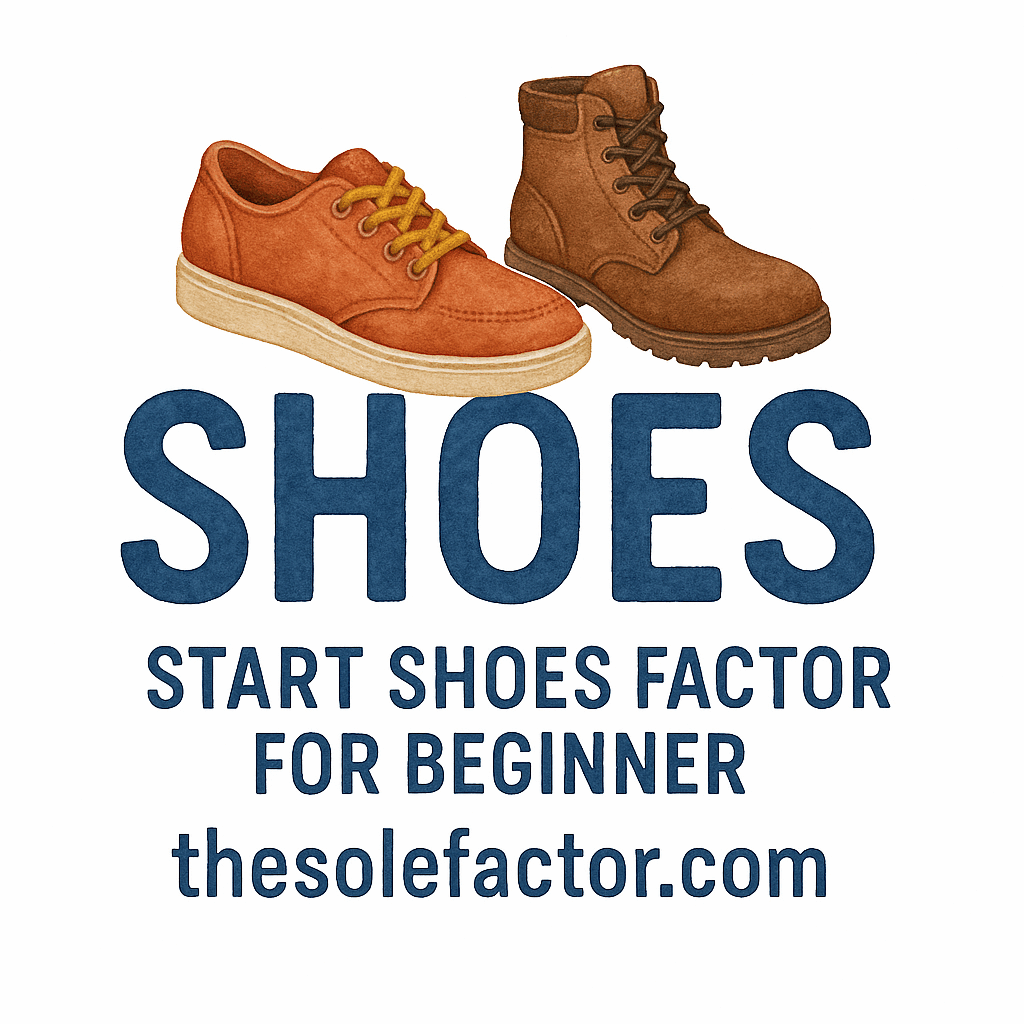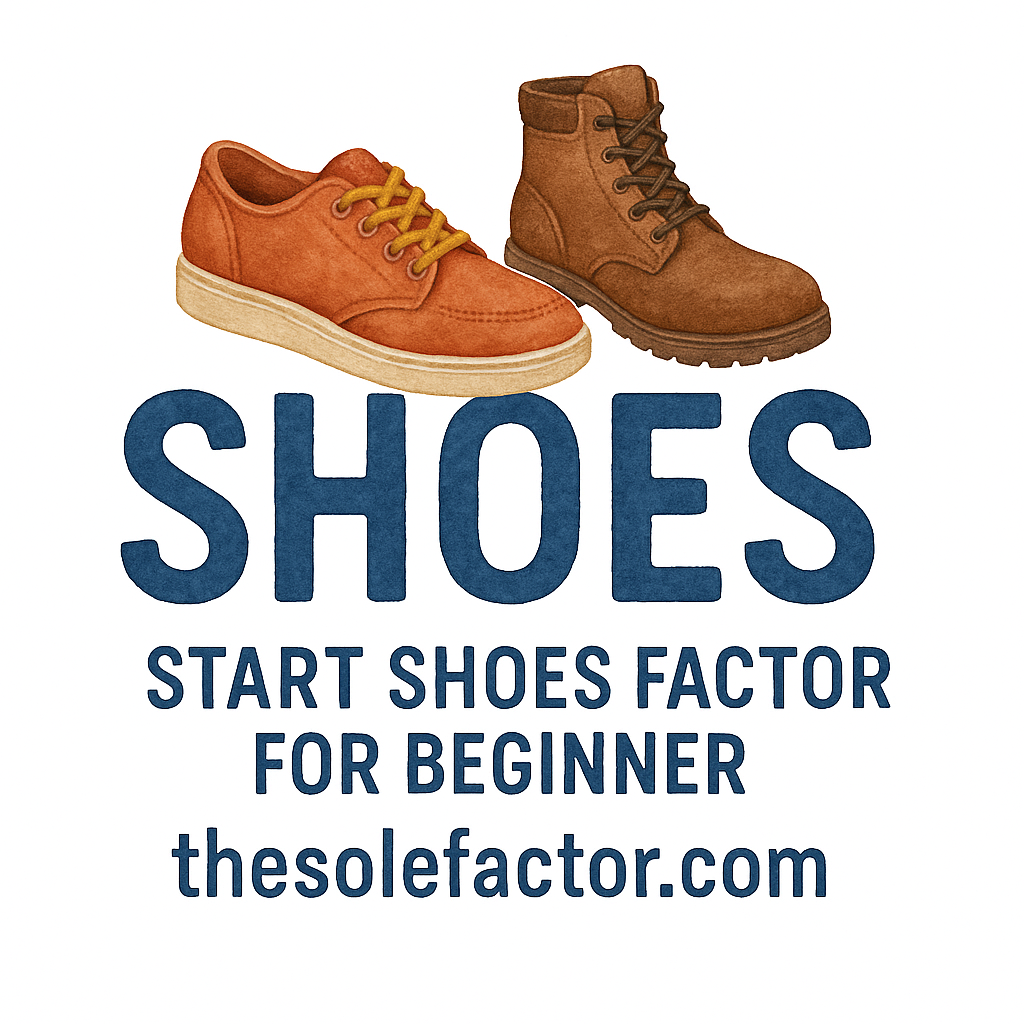Introduction: Why Hiring the Right Staff is Crucial for Your Shoes Factory
Starting a small shoes factory is no easy task. As an entrepreneur, you’re juggling production deadlines, supply chain management, and customer demands. But there’s one critical element that will make or break your success: your team. Hiring the right staff for your small shoes factory is crucial for ensuring smooth operations, meeting production goals, and maintaining a high standard of product quality. But how do you go about hiring the right people?
In this guide, we’ll walk you through 7 essential steps to hire staff for your small shoes factory, helping you build a team that’s skilled, motivated, and committed to your business’s growth.
Step 1: Define Your Staffing Needs
Before you can begin hiring, it’s important to clearly define what roles you need to fill. Each position in your factory plays a unique role in the manufacturing process, and understanding these needs will help you attract the right candidates.
Assess Your Factory’s Requirements
Start by assessing your factory’s operations. Do you need production workers, quality control experts, or machinery technicians? Identifying the key departments that need staff and their specific functions will allow you to determine how many people you need and what skills they should possess.
Create Job Descriptions for Key Roles
Once you have a clear understanding of your needs, create detailed job descriptions for each role. A well-written job description should outline the responsibilities, qualifications, and expectations for each position. Be specific about the skills required, such as proficiency with specific machines or experience in quality control processes. This will help potential candidates understand what’s expected and whether they’re a good fit.
For example, if you’re hiring for a machine operator position, your job description should detail the types of machines they’ll be working with, the level of technical knowledge required, and any relevant safety certifications.
Step 2: Source Candidates Effectively
Now that you know what roles you need to fill, the next step is to source candidates. You’ll want to explore multiple channels to cast a wide net and find the best talent available.
Utilizing Job Boards & Recruitment Agencies
Job boards like Indeed, Glassdoor, and LinkedIn can help you reach a large pool of candidates quickly. You can post job listings for free or opt for paid listings to gain more visibility. If you’re struggling to find qualified candidates on your own, consider working with a recruitment agency that specializes in manufacturing staff. They can help streamline the hiring process and provide you with pre-screened candidates who meet your requirements.
Leverage Social Media for Recruitment
Social media is another great tool for attracting potential candidates. Platforms like LinkedIn, Facebook, and Instagram allow you to reach out to both passive and active job seekers. If your small shoes factory has a strong online presence, you can use your social media channels to post job openings, engage with candidates, and even promote your factory’s culture to attract top talent.
Step 3: Screen Candidates Thoroughly
Once you start receiving applications, it’s time to screen candidates to ensure they meet your qualifications. Thorough screening can help you avoid making costly mistakes and reduce turnover rates.
Conducting Initial Interviews
The first step in screening candidates is to conduct an initial interview. You can either conduct this in person or over video call. During the interview, ask questions about the candidate’s previous experience in the shoes or manufacturing industry, their familiarity with machinery, and their ability to work under pressure.
Be sure to also assess their attitude toward teamwork, problem-solving skills, and reliability. Are they passionate about the shoes industry, or are they just looking for any job? These are important factors to consider.
Evaluate Skills and Experience
Next, evaluate the candidate’s skills and experience. If you’re hiring for a technical role, such as a machine operator or quality control inspector, you may want to conduct a skills test or have them demonstrate their expertise. This step helps ensure that the candidate can perform the tasks required for the role and isn’t just relying on a resume.

Step 4: Make the Right Hiring Decision
After narrowing down your candidates, it’s time to make your final hiring decision. This is a crucial step in the process, as it will determine whether you’re bringing the right person into your factory.
Checking References and Backgrounds
One of the best ways to confirm a candidate’s qualifications is by checking their references and performing background checks. This will give you a better understanding of their work ethic, reliability, and any potential issues that may arise. References from previous employers can offer valuable insight into how the candidate behaves in a work environment and how well they performed in their previous role.
Assessing Cultural Fit
It’s important to hire someone who fits into your factory’s culture. Beyond technical skills, assess how well a candidate will integrate with your existing team. Do they align with your values? Are they open to collaboration? Cultural fit is just as important as technical expertise when building a cohesive team.
Step 5: Onboard and Train New Hires
Once you’ve made the hire, it’s time to onboard and train your new staff. Proper onboarding is crucial for setting new hires up for success and ensuring they understand the expectations of their role.
Creating an Effective Onboarding Process
A structured onboarding process ensures your new hires are prepared and comfortable in their new role. Provide them with all the tools they need to succeed, including safety protocols, factory guidelines, and any relevant software or equipment. You may also want to assign a mentor to guide them through the first few weeks.
Training for Safety and Efficiency
Training your new hires on factory safety protocols and how to use equipment properly is essential. Ensure they understand the importance of safety procedures, especially if they’re working with heavy machinery. Safety training can reduce workplace accidents and boost employee morale.
Step 6: Retain Your Staff and Build Loyalty
Hiring is just the beginning. Retaining your staff and keeping them engaged is crucial for long-term success.
Creating a Positive Work Environment
A positive work environment is key to employee satisfaction. Encourage open communication, foster a culture of respect, and create opportunities for team-building. Happy employees are more likely to stay and perform at their best.
Incentives and Career Growth Opportunities
Offer incentives and career growth opportunities to motivate your staff. Providing room for advancement and offering rewards for good performance can help retain talented employees. Consider implementing a reward system or offering bonuses for meeting production goals.
Step 7: Continuously Review Your Hiring Process
The hiring process doesn’t end once the staff is in place. Continuously reviewing and improving your hiring strategy will help you attract the best talent in the future.
Track Staff Performance and Feedback
Regularly evaluate your staff’s performance and ask for feedback on the hiring process. This will give you insights into whether the employees are satisfied with their roles and whether the hiring process was effective in finding the right candidates.
Improve Your Hiring Strategy
Use the feedback you gather to improve your hiring strategy. If you find that certain types of candidates are more successful in your factory, adjust your recruitment efforts to focus on those types of individuals. Over time, this will help you create a more efficient and successful hiring process.
Conclusion: Building a Strong Team for Your Shoes Factory
Hiring the right staff for your small shoes factory is one of the most important decisions you’ll make as a business owner. By following these 7 steps—defining your staffing needs, sourcing candidates, screening thoroughly, making informed decisions, onboarding effectively, retaining top talent, and continuously improving your process—you can build a strong and dedicated team that will help your factory thrive.
Remember, your team is the backbone of your business. Invest in them, and they’ll help you grow and succeed in the competitive shoes manufacturing industry.
FAQs
- What qualifications should I look for when hiring for a shoes factory?
Look for experience in manufacturing or the shoes industry, technical skills with machinery, and a strong work ethic. - How do I ensure I’m hiring for cultural fit?
Assess candidates’ attitudes toward teamwork, problem-solving, and alignment with your factory’s values during the interview process. - What are the best recruitment channels for a small shoes factory?
Job boards, recruitment agencies, and social media platforms like LinkedIn and Facebook are excellent sources for finding candidates. - How can I retain my staff in a small factory environment?
Offer incentives, career growth opportunities, and create a positive work environment to keep employees motivated and loyal. - How do I evaluate a candidate’s technical skills?
Conduct skills tests or ask candidates to demonstrate their expertise during the interview process. - What should I include in an employee onboarding program?
Include safety protocols, factory guidelines, equipment training, and an introduction to the company culture. - How can I improve my hiring process over time?
Collect feedback from employees and evaluate staff performance to refine your recruitment and onboarding strategies.
Internal Links:
For more insights on branding and marketing your shoes factory, check out our detailed guide on Marketing & Branding for Small Factories.


